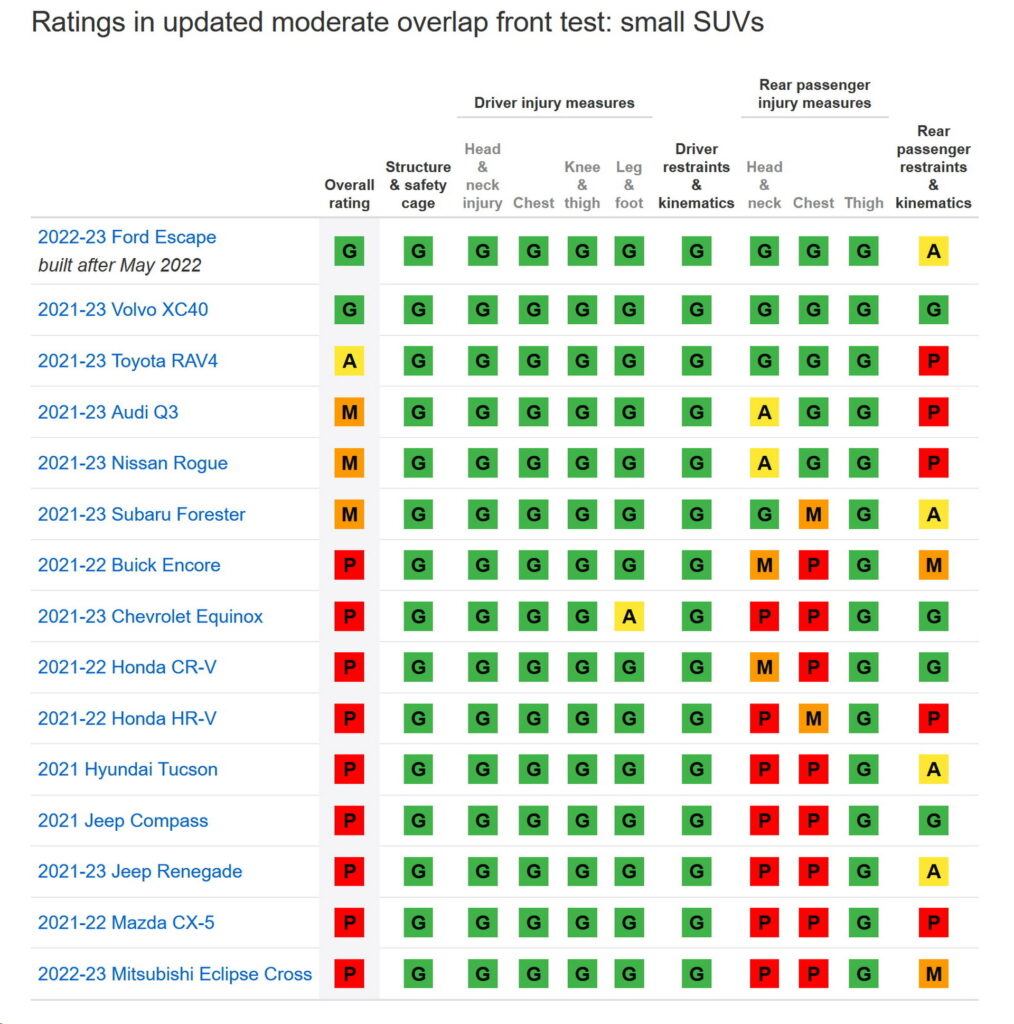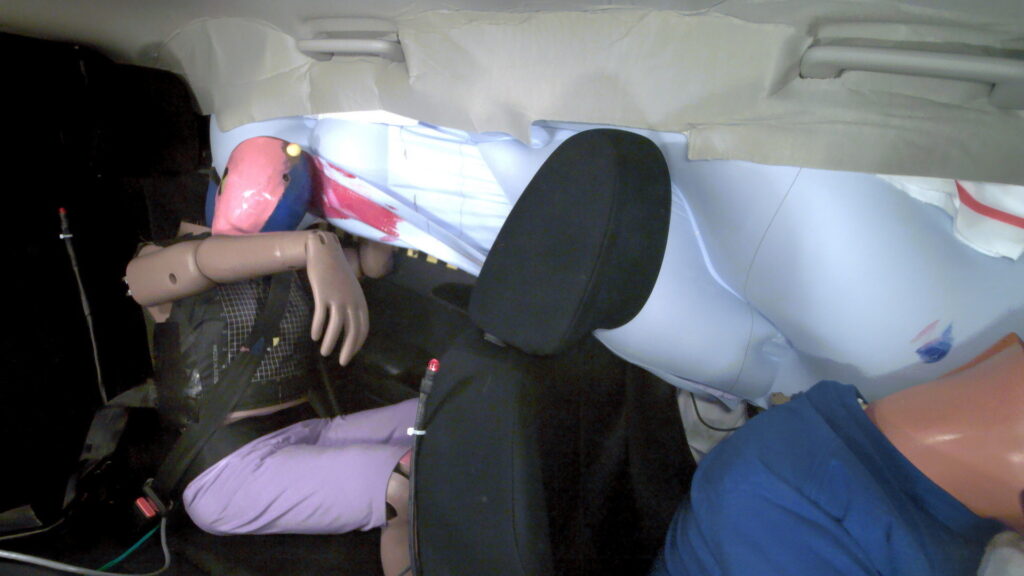The Insurance Institute for Highway Safety (IIHS) has released the results of its updated front overlap crash test that is focused on the effects of a collision on the rear seat occupants, and the findings are alarming.
In a test of 15 new small SUVs, just two earned “Good” ratings in all the institute’s new criteria. They are, the Ford Escape and the Volvo XC40, while all others (listed below) were found deficient in some way, and provided inadequate protection in at least one of the four measurement categories looked at by the IIHS.
The new test has been designed to provide consumers with more information about occupant safety in an accident for rear seat passengers. The IIHS says that this was a particularly urgent addition to its regimen because rear seat passengers tend to be young children or the elderly, who are already vulnerable.
Read: GM, Porsche, Maserati, Kia, And Jaguar Fail To Meet Automatic Emergency Braking Safety Pledge
To earn a “Good” rating, sensors in the second-row dummies had to not exceed the limits indicating that there was an excessive risk of injury to the head, neck, chest, abdomen, or thigh. The airbags also had to prevent the dummies’ heads from making contact with a hard surface, such as the windows or the seat back ahead.
Perhaps more importantly, the seatbelts had to prevent the dummies from “submarining,” a condition in which the occupant slides forward and under the lap belt, causing abdominal injuries. The test is also introducing a new pressure sensor in the chest to monitor the risk of injury to the torso.
“In real-world crashes, chest injuries are the most common serious rear-seat injuries for adults, so that’s a key focus,” said Sushant Jagtap, an IIHS research engineer who assisted in the development of the new test.
In fact, that’s what hurt the Toyota RAV4’s rating. Like the Escape and the XC40, the SUV performed well in most criteria, but was docked points because the second-row passenger’s lap belt moved out of its ideal position onto the abdomen. As a result of being allowed to slide down, the test dummy’s head also slipped beneath the curtain airbag, opening occupants up to yet more risk of injury.
The Audi Q3, Nissan Rogue, and Subaru Forester all earned “Marginal” results in the test for risk of chest injury. The nine “Poor” rated vehicles, meanwhile, are the Buick Encore, Chevrolet Equinox, Honda CR-V, Honda HR-V, Hyundai Tucson, Jeep Compass, Jeep Renegade, Mazda CX-5, and the Mitsubishi Eclipse Cross.
Flaws in these vehicles range from seatbelts that exerted too much pressure on the dummies, to some dummies’ heads ending up between the airbag and the windshield, and, in the case of the Jeep Renegade, the dummy’s head actually hit the C-pillar.
The vehicles were all chosen because, in the front overlap test as it was previously run, all earned a “Good” rating. Now, with the test run in the exact same way, with the exception of a dummy being added to the back seat, just two could maintain that rating.
“The original moderate overlap test was our first evaluation and the lynchpin of the Institute’s crash testing program,” said IIHS President David Harkey. “Thanks to automakers’ improvements, drivers in most vehicles are nearly 50 percent less likely to be killed in a frontal crash today than they were 25 years ago. Our updated test is a challenge to manufacturers to bring those same benefits to the back seat. The stellar performance of the Escape and XC40 shows it’s possible.”





